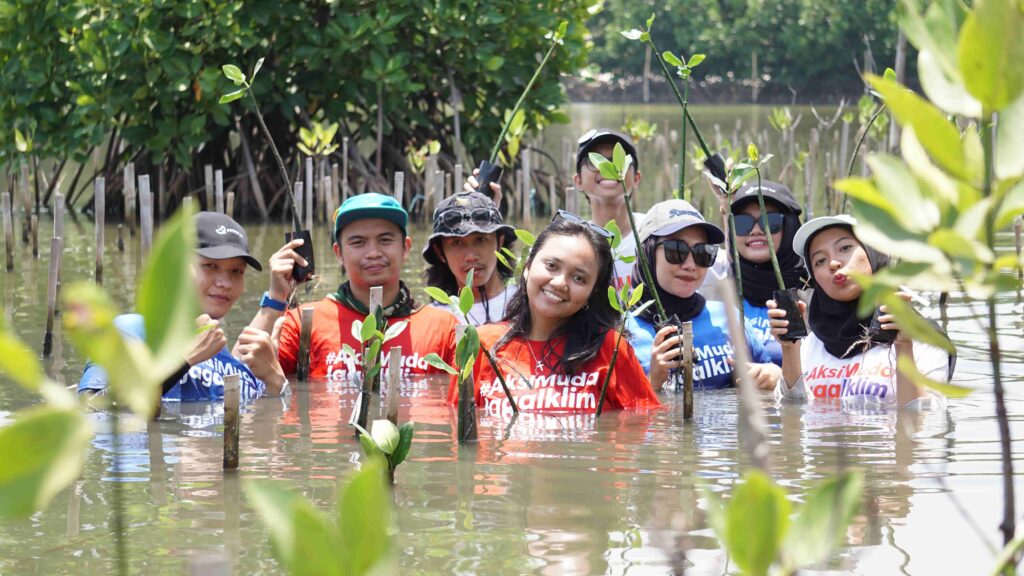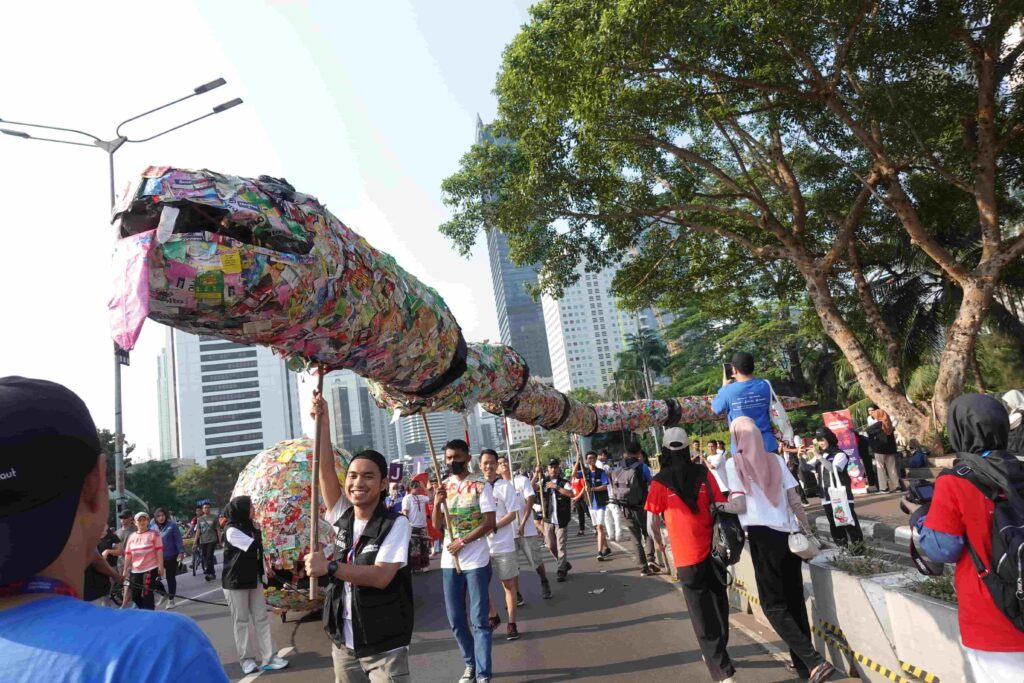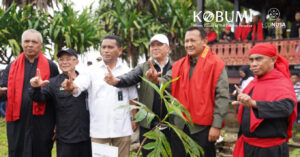
Approximately 65,000 young people from across Indonesia participated in the Aksi Muda Jaga Iklim (AMJI/Youth Climate Action) 2024. The peak of this action was held simultaneously at 1,285 locations throughout Indonesia on October 26, 2024, to commemorate the 96th Youth Pledge Day. This event marked the collective spirit of youth in responding to the increasingly urgent impacts of climate change.
AMJI 2024 was initiated by the communities of Penjaga Laut, EcoDefender, and Yayasan EcoNusa. The National Coordinator of Penjaga Laut, Erwin Falufi Irianti, stated that many young people are concerned about climate change but have yet to find a platform to act together. “We feel the need for continuous action driven by youth. AMJI also highlights local environmental issues that can be voiced through specific, concrete actions,” Erwin explained.
Young People Most Affected by Climate Change
Young people are among the groups most affected by climate change. A report titled “The Climate Crisis Is a Child Rights Crisis: Introducing the Children’s Climate Risk Index” from UNICEF in 2021 indicated that Indonesian children are among the most vulnerable in the world when it comes to exposure to climate change.
Read Also: AMJI 2023: Young People Working Together to Address Climate Crisis
According to Bustar Maitar, CEO of Yayasan EcoNusa, Indonesia, as an archipelagic country located on the equator, is particularly susceptible to the impacts of climate change. “To halt the pace of climate change, we cannot do it alone; it must be a collective effort involving various parties, including youth, government, the private sector, and organizations,” he said.
Enthusiasm of Collaborators and Volunteers
AMJI invites organizations and communities across Indonesia to work together against the climate crisis. This year, 85 communities and organizations joined as collaborators, and tens of thousands of volunteers participated at all action points. They included government entities, youth groups, local communities, and the private sector. The activities were diverse, including the planting of 18,400 mangroves and 24,245 trees, distribution of 21,680 plant seeds, sowing 450 seeds, waste clean-up actions, transplanting 60 coral seedlings, releasing 115 baby turtles, making ecobricks, and discussions on the effects of global warming.
At the Tangerang Mangrove Center, one of the main action points of AMJI, about 200 participants engaged in planting 5,000 mangrove seedlings, sowing 3,100 mangrove shoots, and cleaning up trash around the Teluk Naga beach. Ronald Makabory, Head of the Serang Forest Management Unit at Perum Perhutani, welcomed the youth initiative to protect the environment, particularly through mangrove planting to reduce greenhouse gas emissions. “Our country is currently working to achieve its Nationally Determined Contribution (NDC), one of which is through mangrove planting. We greatly appreciate AMJI friends for carrying out this activity,” he remarked.

Plastic Monster Parade in 7 Cities
In addition to the main activities on October 26, AMJI also featured a Plastic Monster Parade held in seven major cities in Indonesia: Makassar, Ambon, Jakarta, Pontianak, Sorong, Salatiga, and Gorontalo. The Plastic Monster Parade involved parading a giant monster made from plastic waste along the main streets of each city.
The aim of the Plastic Monster Parade is to educate the public about the dangers of single-use plastic waste and the importance of taking real actions to protect the environment. Through this initiative, it is hoped to inspire the community to contribute to reducing single-use plastic consumption and promoting a more sustainable lifestyle. This can start with small steps, such as reducing the use of single-use plastics and implementing recycling practices.
Read Also: 3 Demands to Reduce Single-Use Plastics were Voice Out at Plastic Free March
The Plastic Monster Parade in Makassar, Gorontalo, and Ambon took place on October 26; Jakarta and Pontianak on October 27; and Sorong and Salatiga on October 28. The parade was initiated by Penjaga Laut, EcoDefender, Yayasan EcoNusa, and Metis in Makassar, Ambon, Jakarta, Pontianak, and Sorong, while the activities in Salatiga were initiated by SMP Stella Maris and in Gorontalo by Japesda. In the process of creating the plastic monster, the involved youth collected dozens of kilograms of plastic waste from their surroundings. This initiative also engaged various local communities, schools, and environmental organizations to spread this important message.
“This parade is not just a spectacle. We want the public to understand the negative impacts of plastic waste and motivate them to make changes. Education is key to addressing this issue,” said Suci Muhairan Eddy, the Youth Climate Action Coordinator for Ambon.
The Dangers of Plastic Waste
Plastic waste has widespread impacts on the climate crisis, as it not only pollutes land and oceans but also contributes to harmful carbon emissions. A report from The Pew Charitable Trusts and SYSTEMIQ (2020) stated that without intervention, the amount of plastic waste entering the oceans could reach 29 million metric tons per year by 2040. This study, titled “Breaking the Plastic Wave,” also highlights that plastic pollution in the oceans will triple over the next two decades if significant steps are not taken to reduce plastic waste. This waste threatens marine life, damages ecosystems, and ultimately enters the human food chain.
John Yewen, a comedian who participated in the Plastic Monster Parade in Sorong, remarked that the issue of plastic waste is a serious environmental concern. Every individual has a role to play in preserving the environment, including addressing plastic waste issues. “This is everyone’s issue. So, everyone should care,” he said during the parade.




